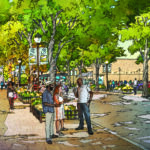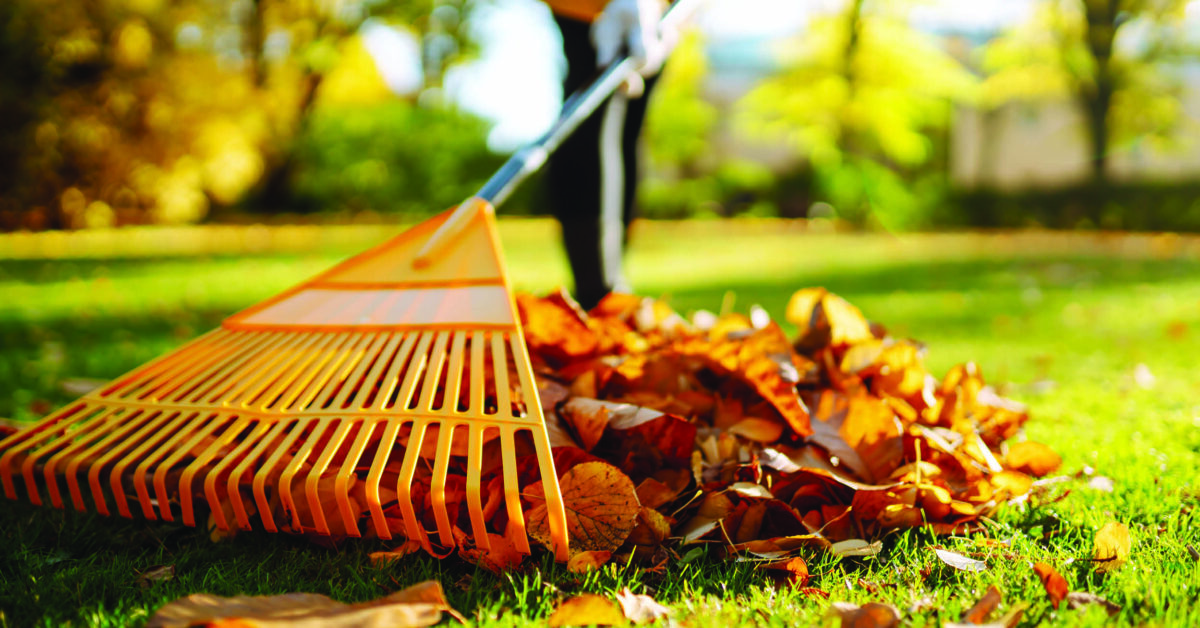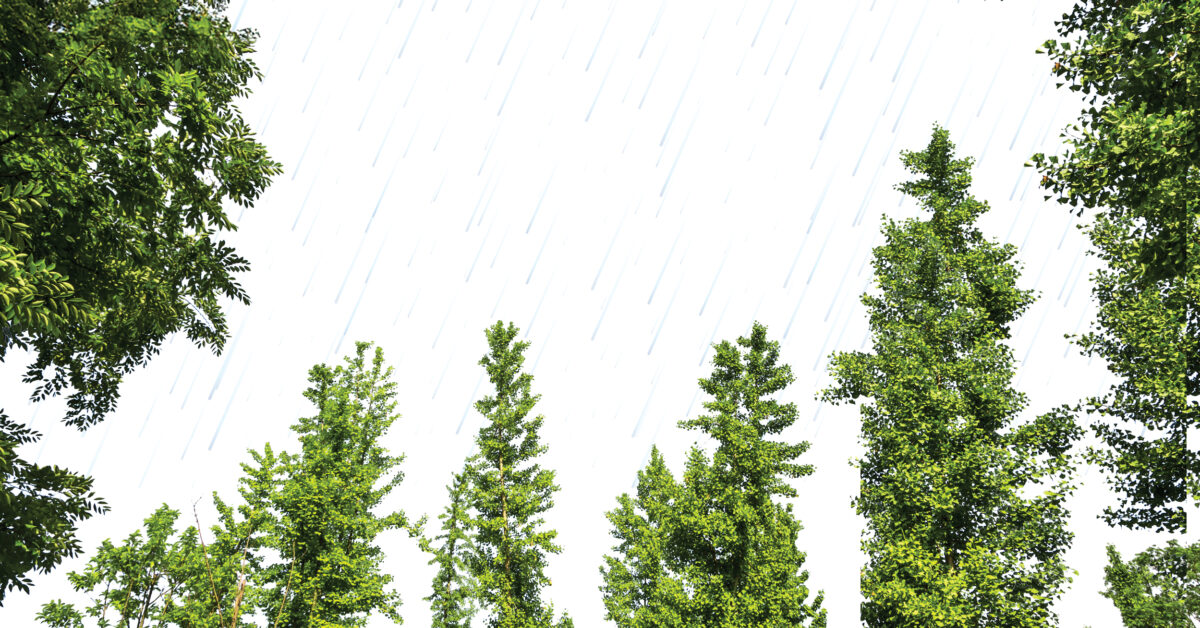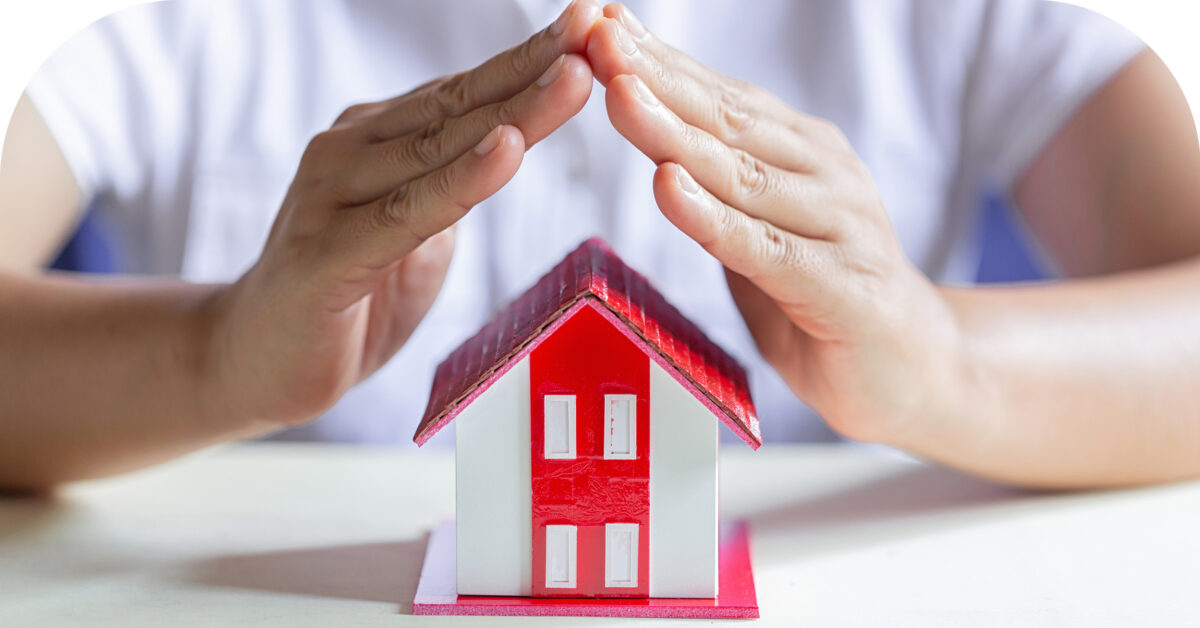
Insurance Handbook
September 2023
Just Imagine SWLA: Strong Downtowns
September 2023Fall is here and it’s time to turn our attention to the outdoors, where we can finally spend a little time without the stifling heat of summer in South Louisiana. It’s a season of transformation, and your lawn and garden are no exception.
Thrive caught up with several local experts to help guide you through essential tasks, from soil care and leaf management to choosing the perfect fall blooms that will keep your garden vibrant. Fall also means a changing environment for pests and a greater likelihood they’ll be looking to get indoors. We’ve brought you the tips and tricks to keep your outdoor spaces healthy and your indoor spaces free of creepy crawlers.
Putting a Scare into the Fall Creepy Crawlies
by Katelynn Mouton
It is spooky season, and with the arrival of fall pumpkins, ghosts and goblins comes the return of a number of fall pests.
Robert Soileau, Branch Manager of J&J Exterminating Lake Charles, says the fall season, and cooler, more moderate temperatures bring out a number of pests.
“Large roaches of the American and Smokey Brown varieties, that you normally see outdoors, start to make their way inside as the temperatures cool down. Mice and rats also both begin to seek warmth indoors as the fall weather arrives.”
If these creepy crawlies were not enough, other insects seem to be more active during the fall season as well.
“Carpenter bees and other flying insects that go dormant in the colder months tend to be more active in the fall as winter approaches,” adds Soileau. “This is because they are busy killing other insects that will serve as their food source for the eggs soon to be laid. These eggs will hatch in time for spring.”
The good news is there are some ways you can scare away these unwanted houseguests.
“Stay on top of normal maintenance of your home and businesses with things like, weather stripping around doors and windows, screens on windows and attic ventilation are a few ways to keep pests from entering,” advises Soileau. “Inspecting firewood before bringing it indoors is also a good way to keep things like spiders and wood-boring beetles from making their way inside.”
Soileau says it is a good rule of thumb, anytime you are bringing in something from the outside, to inspect it closely and make sure there are no insects hitching a ride.
“Hay bales used in Halloween and fall displays can carry a number of insects indoors if not inspected properly,” Soileau says. “And, looking ahead, live Christmas trees should also be inspected, along with decorations brought down from the attic or other storage areas. Be sure to check all of these items for unwanted pests.”
The bottom line? If you are bringing it in from the outside or a non-climate controlled storage area, do a good visual inspection outside before you bringing it inside.
In addition, just because the weather is cooling off, does not mean you are off the hook for lawn care.
“Lawns should be maintained throughout this time of the year as well,” adds Soileau. “It is important to keep vegetation from getting out of control or becoming cluttered to prevent harborage areas near your home.”
Soileau says that things like excess leaves and trimmings should be placed in areas away from your home and storage areas if being used as compost, or disposed of properly otherwise.
Finally, having your home inspected and treated professionally is the best proactive approach to keeping pest problems at bay.
Tips for a Greener Spring
by Katelynn Mouton
After a hot, drought-stricken summer, the fall season offers the perfect opportunity to re-evaluate the needs of your yard.
Things like the installation of an irrigation system and a survey of your property to identify any drainage issues are a couple of good starting points.
“Many Louisiana residents do not have a way to consistently supply their lawns and flowerbeds with adequate amounts of water,” says Alexis Allured, BS, PharmD, co-owner of The Grounds Guys of Lake Charles.
Allured, a licensed landscape horticulturist and certified nursery and landscaping professional, adds that this is a costly mistake.
“Landscaping is an investment, and the best way to ensure protection is by installing either an in-ground sprinkler system, or a drip system, based on your property’s needs.”
As you survey your property, look for drainage issues that may have appeared after torrential rainfalls.
“Fall is a great time to install a robust drainage solution to prevent water intrusion into your home and regain outdoor entertaining space that becomes inundated by unwanted water during heavy downpours,” adds Allured. “Dirt work and grading can be done while lawns are dormant, allowing time for repair and the re-establishment of turfgrasses prior to spring.”
The fall season is also a great time to clean up leaf and plant debris, take care of any needed stump grinding as well as the removal of unwanted disease-causing pests from your yard.
“It is important to remove old, dead plant debris to ensure your trees, shrubs and lawn continue to thrive in a healthy environment that is free of fungi and bugs,” explains Allured. “Pruning is another much needed fall landscaping task. Focus on pruning dead branches and spent blooms to allow plants to reallocate nutrients to new growth.
Weed abatement is another important fall lawn task according to Allured. “We live in a subtropical climate and keeping weeds at bay in your beds and lawn is a year-round job. Weeds not only look unsightly, but they can also stunt growth in your plants by stealing their nutrients.”
Allured recommends implementing a comprehensive turf care plan, including pre-emergent and post-emergent herbicides and fertilizer. “This will ensure your lawn stays healthy all year.”
Finally, go plant a tree!
“The LSU AgCenter says the best time to plant a tree in Louisiana is from October to March,” says Allured. “While the ground temperature is cool, proper root development can take place. When the heat of the summer rolls back around, the plant is well-established and can reserve nutrients for survival instead of root formation.”
Refresh Your Landscape
by Kristy Como Armand
Milder fall weather is here, and it provides the perfect opportunity to help your yard recover from the record-breaking heat of the past few months.
The first step, according to Chad Everage with Landscape Management, is determining which parts of your landscape need to be replaced and which will recover with the right care. “Don’t let outward appearances fool you. Despite appearing lifeless on the surface, most plants and trees are remarkably efficient in conserving nutrients during a drought or extreme heat, a survival strategy that enables them to thrive when conditions improve. They just need a little time and care to come back strong by the spring. Give them time to recover before you determine if they need to be replaced.”
He says one trick to determining if a tree is recoverable is to gently scratch beneath the bark, and if you see green inside, it should be fine. “If you aren’t sure, feel free to send us a photo through our website and we’ll be happy to provide some guidance.”
Everage says fall is prime time for landscape care, even though many people put away the mower and trimmers as soon as the first cold front arrives. “You shouldn’t ignore your yard at any time of the year, and that includes cooler months. There is work to be done now to help restore your landscape from the harsh summer and to set the stage for a healthier start next spring.”
“Fall is the best time of year to trim hedges and trees. Now that we’ve had some rain, it’s safe to trim back any of the heat-damaged sections. As an added benefit, trimming trees now, will mean you have fewer leaves to rake through the rest of the season.” He advises identifying and removing dead or diseased limbs first, and then cutting back excessive growth and trimming shrubs into the desired shape.
Everage says it’s important not to stop mowing your grass just because the weather is cooler. Raise the height on your lawn mower to leave a blade that is two-and-a-half to three inches tall throughout the fall. He explains this is the optimum height for preventing diseases in the winter while still providing your grass with the self-sufficiency it needs to store food for the coming months.
He says most homeowners have no trouble dealing with small projects themselves. “Planting a tree, designing a flower garden or planting beds around a deck are perfect do-it-yourself projects. Designing an overall landscape, including drainage, outdoor living areas and major planting, may require some expert design advice and/or installation assistance, depending on the capabilities of the homeowner. It may also be something you add to in stages, over time. We’re always here to help, whatever the size of the project, and whether you just need advice, plants and supplies, or a full design and install.”






